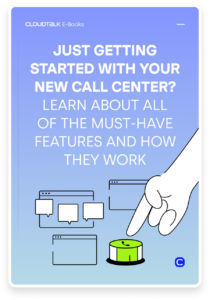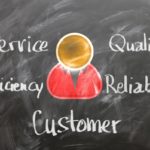Top Call Center Optimization Strategies
& Best Practices For 2025

Struggling with call center inefficiencies that hinder growth? Discover transformative optimization strategies for 2025 that promise not just survival, but thriving competition.
Key Takeaways:
- Call Center Optimization focuses on enhancing performance and productivity through strategic resource, technology, and process utilization, aiming at improving customer service and sales.
- Benefits: expect improvements in first contact resolution rates, decreased average handle time, minimized agent turnover, targeted customer support, lower abandonment rates, and enhanced agent training.
- Customer Experience Improvement: through personalization, reduced wait times, consistent service across channels, faster resolutions, proactive communication, and continuous improvement.
- Optimization Areas: prioritize agent performance, service quality, and workforce management to maximize call center performance effectively.
- Best Practices: include clear metrics and KPI tracking, effective agent training and development, prioritizing employee experience and satisfaction, and leveraging essential call center optimization features.
What Is Call Center Optimization?
Call center optimization refers to the strategic utilization of resources, technology, and processes to enhance a call center’s overall performance and productivity – primarily in terms of customer service and sales.
This includes maximizing the performance of your call center workforce, streamlining business processes, leveraging innovative call center optimization software, and implementing best practices tailored to your specific industry and customer needs.
Today, call center optimization ensures that your business’s operations are finely tuned, efficient, and primed for success in a fast-paced digital landscape. They do so primarily by exceeding customer expectations, enabling agents, and driving revenue.
What Are the Benefits of Call Center Optimization?
Leveraging successful call center strategies to streamline processes can do a lot for your business. But company-wide improvement takes time, and you can’t do everything simultaneously.
So, you must be intentional about the call center metrics you pursue first. This decision should be based on your KPIs, overall objectives, and internal benchmarking to identify your business’s biggest weaknesses.
However, there are several overarching benefits all companies can anticipate as a result of their optimization process. So, to give you a bit of motivation, here are some of the best and biggest things to look forward to:
1. Higher First Contact Resolution Rates
Call center optimization strategies can boost CSAT rates and reduce operational costs. They do so by empowering agents with the tools and knowledge they need to resolve customer inquiries promptly and effectively in their first interaction.
For call center managers, real-time benefits include improved customer loyalty, reduced escalations, and higher agent productivity. It leads to a more streamlined and efficient operation.
2. Decreased Average Handle Time
By providing agents with the right training and resources and leveraging advanced call center optimization software, call centers can significantly reduce average handle time (AHT), resulting in quicker resolutions of customer queries and better utilization of agents’ time.
For call center managers, benefits include improved service levels, increased agent capacity to handle more calls, and enhanced overall operational efficiency, ultimately leading to cost savings and improved customer satisfaction. If you want to optimize the time usage of your agents even more, a good idea would be to implement capacity planning software.
If you want to optimize the time usage of your agents even more, a good idea would be to implement capacity planning software.
3. Minimized Agent Turnover
By prioritizing agent satisfaction and well-being with comprehensive training, clear career paths, and necessary support systems, you can lower agent turnover and reduce recruitment and training costs.
For call center managers, this means improved team morale, increased employee retention, and a more stable and skilled workforce, leading to higher-quality customer interactions and improved business outcomes.
4. Targeted Customer Support
Call center optimization allows for the segmentation and prioritization of customer inquiries based on urgency, complexity, and customer value. You can deliver more personalized and efficient customer support by routing calls to the most qualified agents or utilizing self-service options where appropriate.
For managers, this means optimized resource allocation, improved service levels, and enhanced customer satisfaction, leading to increased loyalty and retention.
5. Lower Abandonment Rates
Through efficient call routing, shorter wait times, and proactive communication, the call center optimization model helps minimize abandonment rates, ensuring that customers are connected with agents promptly and reducing frustration and potential revenue loss.
Real-time benefits for call center managers include improved service level adherence, forecasting accuracy, and revenue generation through better customer engagement and retention.
6. Enhanced Agent Training and Professional Development
Call center performance optimization delivers the continuous training and development programs needed to give agents the skills and knowledge to handle diverse customer interactions effectively. This translates to higher confidence, performance, and job satisfaction.
For managers, the real-time advantages include higher-quality customer interactions, reduced error rates, increased employee engagement, and improved overall call center performance and customer satisfaction metrics.
Improving Customer Experience Through Optimization
Naturally, the above-mentioned benefits also apply to the customers’ experience. Call center optimization isn’t just about maximizing efficiency—it’s about putting the customer at the center of every interaction and delivering experiences that inspire trust, loyalty, and satisfaction.
Here are just a few of the benefits successful call center strategies provide by turning one-off purchasers into loyal customers:
1. Personalized Service
Call center optimization enables businesses to capture and utilize customer data effectively, allowing agents to personalize interactions based on each customer’s preferences, history, and needs.
By leveraging customer information, agents can offer tailored solutions and recommendations, demonstrating a deep understanding of the customer’s unique requirements and fostering stronger connections.
2. Reduced Wait Times
Long wait times and queue frustrations can tarnish the customer experience. However, efficient call routing, workforce management, and self-service options can help minimize wait times and ensure customers are connected to the right agent. This leads to greater satisfaction and a better perception of your brand.
3. Consistent Service Across Channels
In today’s omnichannel environment, customers expect seamless experiences across multiple touchpoints, whether it’s phone calls, emails, chat, or social media interactions.
Call center optimization integrates various communication channels, ensuring a consistent and cohesive customer experience regardless of how they engage with your business.
4. Faster Resolutions
By empowering agents with the right tools, training, and access to relevant information, business process optimization facilitates quicker resolutions of customer issues.
Agents can efficiently address inquiries, resolve problems, and provide accurate information, minimizing customer effort and frustration. Quick help enhances satisfaction and contributes to higher first-contact resolution rates.
5. Proactive Communication
Call center performance optimization enables proactive customer communication, such as appointment reminders, order updates, or service notifications.
Businesses can demonstrate their commitment to customer satisfaction and prevent potential issues from escalating by reaching out to customers before they even need to contact support.
6. Continuous Improvement
A key aspect of optimization is the emphasis on continuous improvement. By analyzing customer feedback, monitoring performance metrics, and identifying areas for enhancement, you can adapt and evolve customer service strategies to better meet changing customer expectations.
This commitment to improvement ensures that the customer experience remains a top priority and aligns with evolving market trends.
This is increasingly important in today’s highly competitive market, where companies rise and fall daily. As can be seen in the following statistics, customers are fickle creatures.
For example, 51% say they’ll never do business with a company again after a single bad experience, and 74% will switch just due to a complex buying process.
Call Center Aspects to Optimize for Maximum Performance
Now that you’ve seen some of the highly valuable benefits you can achieve with call center optimization software, it’s time to take a look at the most vital parts of your operations to prioritize.
Call Center Agent Performance
Have you ever heard the saying that you only get one chance to make a great first impression? As their title suggests, your company representatives are almost wholly responsible for establishing a positive relationship between you and your customers.
But being on the front line is anything but easy. Call center agents need to be properly equipped to handle their tasks, and that’s where your first opportunity for optimization rears its head. Here are just a few things you should do to maximize agent performance.
- Training and Development:
Invest in comprehensive training programs to equip agents with the necessary skills, product knowledge, and communication techniques to handle customer inquiries effectively. Regular coaching and ongoing development opportunities help agents continually improve their performance. - Performance Metrics:
Establish clear performance metrics, such as average handle time, first contact resolution rate, and customer satisfaction scores, to measure agent conduct accurately. Provide agents with regular feedback and evaluations to identify areas for improvement and recognize achievements. - Empowerment and Autonomy:
Empower agents to make decisions and resolve issues independently whenever possible. Autonomy boosts agent confidence, morale, and accountability, leading to higher-quality interactions and improved customer satisfaction. - Technology and Tools:
Equip agents with user-friendly call center optimization software, CRM systems, and knowledge bases to streamline workflows, access customer information efficiently, and enhance productivity. Utilize advanced features such as call routing algorithms and predictive analytics to optimize agent workflows and improve performance.
Discover how Cloudtalk’s advanced call routing can streamline your operations

Quality of Call Center Service
It’s important to remember that the quality of your customer service is not wholly on your agents’ shoulders. Company policies, organizational values, and departmental hierarchies all have a part to play in setting up exceptional experiences.
Therefore, it’s important to take full stock of your company’s activities and consider the part your departments play in creating a positive and seamless customer journey through each part of your funnel. Here are a few things you can improve:
- Quality Assurance Processes:
Implement robust quality assurance processes to monitor and evaluate the quality of customer interactions. Regularly review call recordings, conduct quality assessments, and provide targeted feedback to agents to maintain service excellence. - Customer-Centric Approach:
Cultivate a customer-centric culture within the call center, emphasizing empathy, active listening, and personalized service. Encourage agents to prioritize the customer’s needs, address concerns proactively, and exceed expectations by creating memorable experiences. - Consistency Across Channels:
Ensure consistency in service delivery across all communication channels, including phone calls, emails, chat, and social media. Align service standards, branding guidelines, and response times to provide a seamless omnichannel experience for customers. - Continuous Improvement:
Foster a continuous improvement culture by soliciting customer and agent feedback, analyzing performance data, and implementing process enhancements. Review and refine service strategies regularly to adapt to evolving customer preferences and market dynamics.
Call Center Workforce
While we’re on the topic of taking a bird’s-eye view of your company, let’s talk about call center workforce optimization. The way customer service representatives and sales agents do their jobs is just one part of the equation.
How they feel while doing it is an equally important, but unfortunately often overlooked, contributing factor to your call center’s performance. Ensure your employees don’t dread getting out of bed in the morning; you’ll see the difference immediately.
Try this:
- Resource Planning:
Implement effective workforce management strategies to accurately forecast call volumes, schedule staff appropriately, and allocate resources efficiently—balance staffing levels to ensure adequate coverage during peak hours while minimizing idle time. - Work-Life Balance:
Prioritize work-life balance to prevent burnout and improve agent retention. Offer flexible scheduling options, paid time off, and wellness initiatives to support employee well-being and job satisfaction. - Team Collaboration:
Foster a collaborative work environment where agents can share knowledge, collaborate on complex issues, and support each other as a team. Encourage open communication, teamwork, and mutual respect among agents to enhance morale and productivity. - Recognition and Rewards:
Recognize and reward agents for their contributions and achievements through incentives, bonuses, and employee recognition cards. Celebrate milestones, acknowledge exceptional performance, and show appreciation for the dedication of the call center workforce.
Call Center Optimization Strategies: 4 Best Practices
Now, you must think, “That’s great, but how do I achieve all this?”. Don’t worry; we won’t leave you in the dark. Below, you’ll find all the information you need to start making progress toward the goals you set for yourself.
1. Clear Metrics, KPI Tracking & Goal Setting
These must align well with your overall company goals and S.M.A.R.T. strategy to boot. In other words, they must be specific, measurable, achievable, relevant, and timely. Don’t forget you also need to have a way of tracking and monitoring them.
Below, you’ll find the top 3 call center metrics for both sales and support to watch and optimize in 2024:
1. Conversion Rate: The percentage of outbound calls that result in a desired outcome, such as a sale, appointment booking, or lead generation. It measures the effectiveness of outbound sales efforts in converting prospects into customers or qualified leads.
Note
Global Benchmark: 2.35%
2. Average Call Duration: The average time spent on outbound sales calls. This metric provides insights into the efficiency of sales conversations and helps identify opportunities to streamline interactions and improve productivity.
Note
Global Benchmark: 5 minutes and 2 seconds (302 seconds)
Dialing Efficiency: The ratio of successful connections to attempted outbound calls, often expressed as a percentage. Dialing efficiency measures the effectiveness of reaching prospects and helps optimize calling strategies to maximize contact rates and sales opportunities.
Note
Global Benchmark: 80% in 20 seconds
Want to learn more? Check out our definitive guide
2. Effective Agent Training & Development
Investing in comprehensive agent training programs is crucial for equipping agents with the skills, knowledge, and tools needed to excel in their roles. Effective training should cover product knowledge, communication techniques, problem-solving skills, and customer service best practices. Ongoing coaching, feedback, and skill development opportunities ensure that agents remain equipped to handle diverse customer inquiries and deliver exceptional service consistently.
3. Employee Experience & Satisfaction
Prioritizing employee experience and satisfaction is essential to maintaining a motivated, engaged, high-performing workforce. Call centers should focus on creating a positive work environment, offering competitive compensation and benefits, providing opportunities for career advancement, and fostering a culture of recognition and appreciation. By investing in employee well-being and satisfaction, call centers can reduce turnover, boost morale, and deliver better customer experiences.
4. Essential Features for Call Center Optimization
Call center optimization leverages advanced technology and features to streamline operations, enhance productivity, and improve customer service. Below, you’ll find examples of the most vital call center features you should consider implementing:
- Call Center Analytics: Centralize all your team’s data and access everything you need to know regarding your agent’s performance or call statistics to make predictions and optimize your strategy.
Go as deep as you like. Track every step of every inbound or outbound call. Use that information to expertly evaluate the performance of individual agents and departments alike.
Best for: Inbound & Outbound Operations - Analytics Dashboards: Monitor everything happening in your teams in real time, from active calls, queues, caller identity, and agent availability. View reports in hourly increments or for the whole day at a glance.
Allow representatives to create custom statuses to maintain a clear view of everyone and everything. Identify bottlenecks, divide tasks evenly, and solve crises as they happen.
Check out all the 25+ Best Call Center System Features
How to Evaluate the Call Center Optimization Process
The best way to evaluate how your call center optimization is going include:
1. Performance Metrics Analysis
Assessing key performance metrics and KPIs is crucial for evaluating the effectiveness of the call center optimization process. Analyze metrics, including average handle time, first-contact resolution, customer satisfaction, and service level. Compare current performance data with historical trends and industry benchmarks to gain insights into progress.
2. Customer Feedback and Satisfaction Surveys
Soliciting customer feedback directly through surveys, feedback forms, or post-interaction surveys provides valuable insights into their satisfaction levels and perceptions of the call center service. Analyze feedback to identify recurring issues, pain points, and areas for improvements to enhance the customer experience. Consider implementing Net Promoter Score (NPS) surveys to measure customer loyalty and advocacy.
3. Operational Efficiency and Cost Analysis
Evaluate the operational efficiency of the call center optimization process by analyzing resource utilization, staffing levels, and cost-effectiveness. Assess the impact of optimization strategies on reducing operating costs, improving productivity, and maximizing resource utilization. Consider factors such as agent occupancy rates, average wait times, and cost per call to identify opportunities for further optimization.
4. Technology and Infrastructure Evaluation
Evaluate the effectiveness of call center optimization technologies and infrastructure in supporting operational goals and delivering superior customer experiences. Assess the functionality, reliability, and usability of call center software, CRM systems, IVR systems, and other technology solutions. Identify any gaps or shortcomings in the technology stack and explore opportunities for enhancements or upgrades to better align with business needs.
Organizations can gain valuable insights into performance levels, customer satisfaction, operational efficiency, and employee engagement by systematically evaluating these aspects of the call center optimization process.
Use evaluation findings to refine strategies and address areas for improvement. Drive continuous optimization efforts to achieve better outcomes and maximize business impact.
Conclusion
Call center optimization is essential to deliver exceptional customer experiences, maximize operational efficiency, and drive business growth.
By implementing strategic goal setting, effective training, utilization of technology, and continuous performance monitoring, call centers enhance agent performance, improve service quality, and achieve better outcomes.
With a customer-centric approach and a commitment to continuous improvement, organizations also position themselves for success in today’s competitive marketplace.
Embracing call center optimization is not just a choice—it’s necessary for businesses to thrive in the digital age.
What did you find in this article?
How to improve call center performance?
To enhance call center performance, consider implementing strategies such as clear goal setting, effective agent training, utilization of call center optimization software, and regular performance monitoring.
By setting specific performance metrics, providing comprehensive training, leveraging technology solutions, and continuously analyzing performance data, call centers can optimize operations, boost productivity, and deliver superior customer experiences.
What is call center workforce optimization?
Monitoring call center performance involves tracking key performance indicators (KPIs) such as average handle time, first contact resolution rate, and customer satisfaction scores.
Utilize call monitoring software, quality assurance assessments, and customer feedback mechanisms to evaluate agent performance, adherence to service standards, and overall service quality. Regularly review performance metrics, analyze trends, and identify areas for improvement to ensure ongoing optimization of call center operations.
How do we monitor call center performance?
Workforce management in a call center involves optimizing staffing levels, scheduling shifts, and managing agent performance to meet service level agreements (SLAs) and operational goals.
It encompasses activities such as forecasting call volumes, scheduling agents accordingly, monitoring adherence to schedules, and adjusting staffing levels in real time to maintain service quality and efficiency.
How to evaluate call center agent performance?
Evaluating call center performance involves analyzing key metrics, soliciting customer feedback, conducting quality assurance assessments, and assessing operational efficiency. Review performance metrics such as average handle time, first contact resolution rate, and customer satisfaction scores to gauge performance levels.
Gather customer feedback through surveys or post-interaction feedback forms to assess satisfaction levels. Conduct quality assurance assessments to evaluate agent performance and adherence to service standards. Analyze operational efficiency metrics such as resource utilization and cost per call to identify areas for improvement and drive continuous optimization efforts.
How can we improve call center agent performance?
To enhance call center agent performance, consider implementing strategies such as comprehensive training programs, performance incentives, coaching and feedback mechanisms, and using call center optimization software.
Provide agents with the necessary skills, product knowledge, and tools to handle customer inquiries effectively. Offer incentives and recognition for top performers, provide regular coaching and feedback, and leverage technology solutions to streamline workflows and optimize productivity.
























